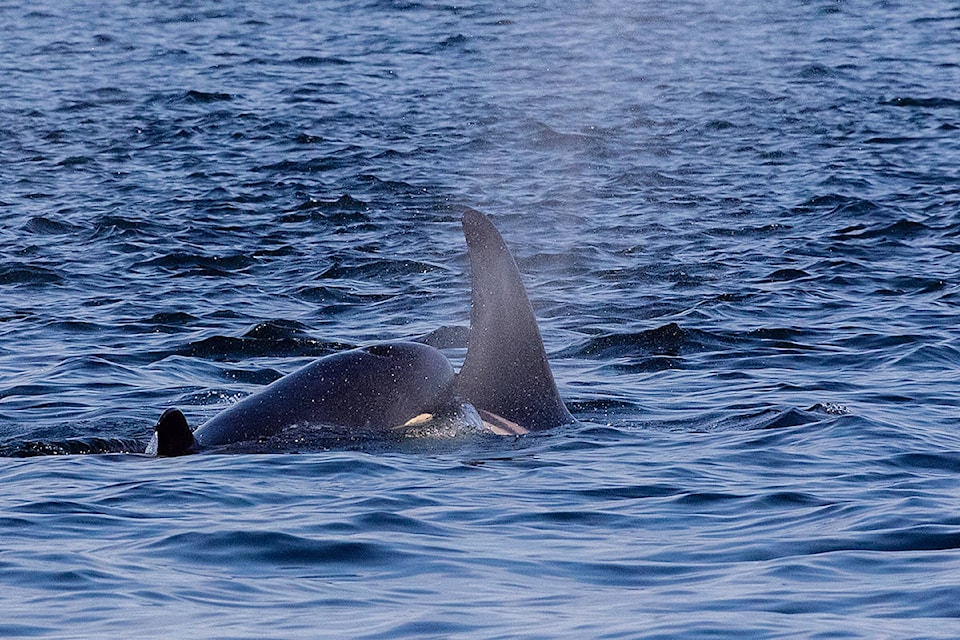Northern resident killer whales were spotted in Johnstone Strait for the first time this year, surprising eco-tourism passengers last weekend as the orcas surfaced, spy hopped and fed on salmon.
Among those spotted was A73 – a female whale also known as Springer – which was successfully re-integrated into her pod following human intervention after being discovered emaciated hundreds of miles from her family pod, according to a press release from Prince of Whales Whale & Marine Wildlife Adventures. In 2002, she was captured, treated medically and transported to her traditional territory, becoming the only whale in history to be successfully re-integrated into a wild population.
“It was a sight to behold,” said captain Scott Turton of Prince of Whales Whale & Marine Wildlife Adventures. “We shut down the engines, put down the hydrophone and we listened to their vocalization. It was magical. I don’t think there was a dry eye on board.”
With his telephoto lens, Turton snapped photos of a dozen resident orcas, including Springer and her two calves.
The timing of the northern residents’ return to the Johnstone Strait is fairly consistent with historic norms, said whale researcher Paul Spong of OrcaLab.
“This is the beginning of the summer salmon runs so that’s why the northern resident orcas have returned,” Spong said in the press release. “The recent rains have been really welcome, particularly for the rivers which is where the salmon are headed.”
The northern resident killer whale population numbers more than 300 and they feed exclusively on salmon. Their range extends from southern Alaska to southern Washington State. It is expected that they will remain in the Johnstone Strait area, off of Vancouver Island, until late September or early October.
“Since May we have been watching humpback whales and transient orcas and now we have the arrival of the northern population,” said Alan McGillivray, owner of Prince of Whales. “It comes at the same time as the southern resident killer whales have returned to the Salish Sea.”
The endangered population of southern resident orcas, which now number 76, were not seen for an unprecedented eight weeks during May and June before being spotted last week off the west coast of Vancouver Island.
Prince of Whales is one of the oldest marine tour companies in British Columbia and is committed to be an industry leader when it comes to eco-tourism and environmental conservation, recently committing $1 million over five years to orca-based science programs and chinook salmon recovery projects in British Columbia. The investment will come from a $5-per-passenger ecological surcharge.
